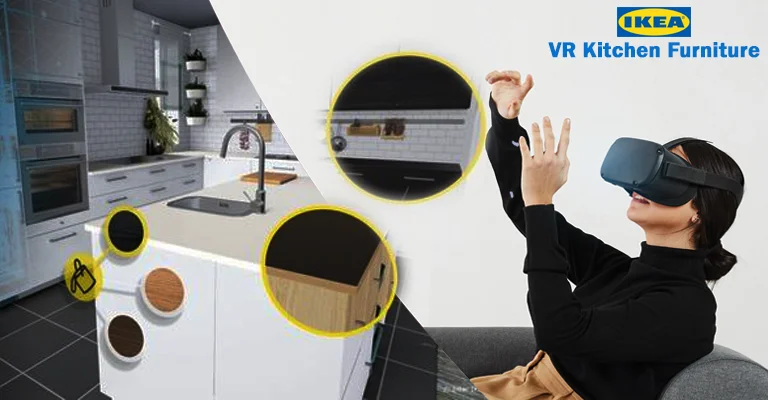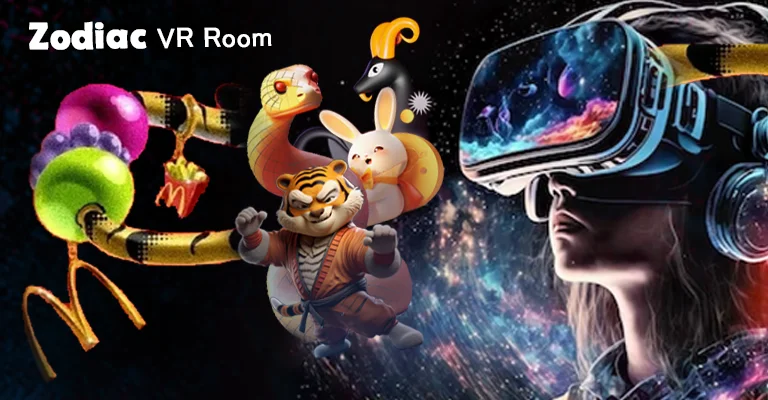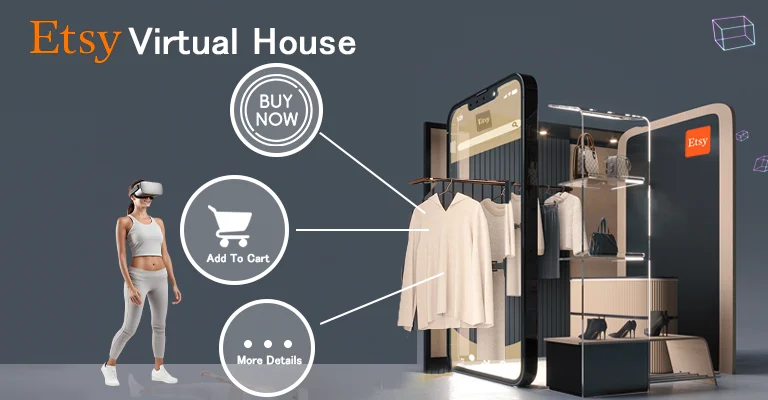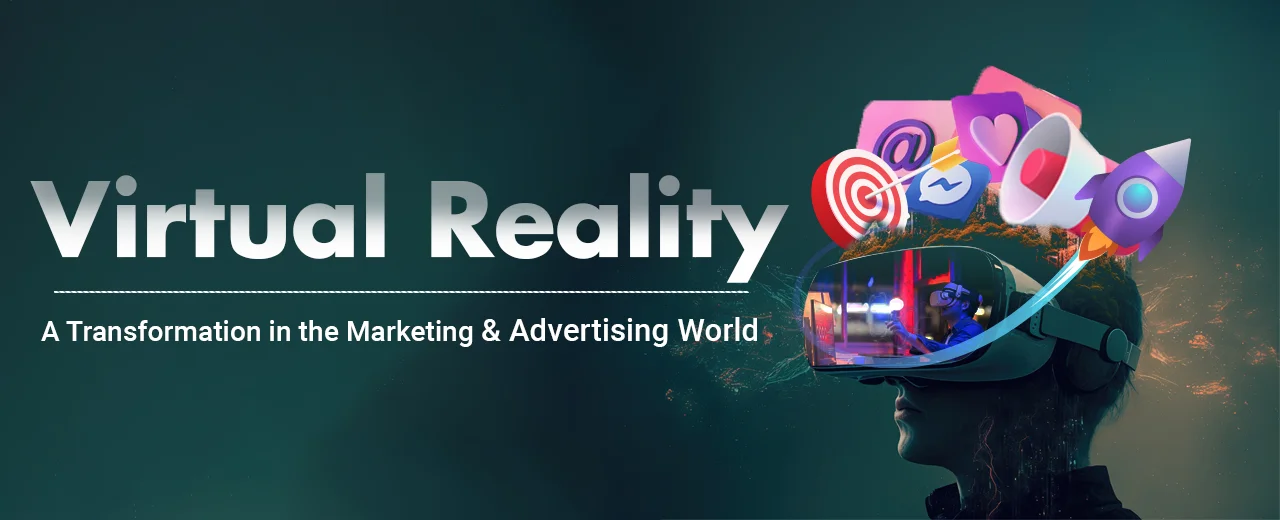VIRTUAL REALITY TECHNOLOGY: RESHAPING THE FUTURE OF MARKETING AND ADVERTISING
Virtual Reality or VR technology has emerged as a revolutionary force, allowing various industries to unlock its immersive capabilities. From education to advertising, startups to industry giants, everyone is tapping into the vast potential of VR. In this blog, we will delve into the transformative impact of virtual reality on the marketing and advertising landscape.
What is Virtual Reality?
At its core, Virtual Reality is a technology that elevates user experience with a simulated environment to create a digitally immersive experience. This capability makes VR an ideal tool for experience-driven marketing and allows brands to engage consumers at a deeper level.
Beyond simulating environments, VR technology leverages advanced sensors to track your head and hand movements, translating them into real-time actions within the virtual world. Imagine picking up a virtual paintbrush and feeling its texture as you paint on a digital canvas; this level of sensory engagement is what sets VR apart. With specialized headsets and haptic gloves, the line between reality and virtuality blurs, making VR a powerful tool for brands to create truly immersive experiences.
New Grounds of Application for Marketing and Advertising
Several prominent brands are keen on leveraging the power of the latest technologies for marketing and advertising their products. Having VR products or services in addition to base offerings positions brands as being future ready. VR worlds are at a nascent stage, look exciting, and offer an immersive experience; no wonder then consumers are excited to get a glimpse. With this hype, people are now looking out for VR experiences wherever they can get their hands on them.
Staging a VR experience is a great way for businesses to pull in the crowds – be it a physical store or an online one. Let’s look at 3 brands who have leveraged VR innovations on top of having massive brand presence, visibility, and reputation across the globe.
It is expected that by the end of 2024, almost 34 million people are going to adopt VR headsets.
IKEA’s Virtual World

One notable example is IKEA – the Swedish furniture giant. IKEA utilizes VR to offer customers a virtual showroom experience, allowing them to explore and interact with furniture in a digital space before making a purchase. This not only enhances the shopping experience but also reduces the likelihood of post-purchase dissatisfaction.
IKEA’s VR showroom isn’t just about convenience; it’s a strategic move. By eliminating physical limitations, they showcase countless furniture combinations without the need for extensive floor space. The idea is that testing furniture arrangements in real-time reduces design mistakes and boosts customer satisfaction, leading to fewer returns and happier customers. Imagine trying a bold couch color virtually before it takes a plunge in your real living room – VR unlocks endless possibilities for confident decor decisions.
Spending on VR technology across the world in 2024 is expected to reach $72.8 billion.
McDonald’s Zodiac VR Room

To ring in the Chinese New Year, McDonald’s created a virtual reality haven, revealing a Zodiac wonderland. Visitors had the chance to dive into the fascinating realm of the Chinese Zodiac, discovering the quirks and predictions tied to each zodiac animal. It wasn’t just a display; it was an interactive experience that snags your sign’s info and even your personal horoscope.
The McDonald’s VR experience wasn’t just a quirky marketing stunt; it was a masterclass in gamified engagement. Younger audiences, drawn to interactive experiences, eagerly explored the Zodiac wonderland, experiencing personalized horoscopes, and immersing themselves in virtual games. This playful approach not only built brand loyalty but also provided valuable data on user preferences and behaviors, paving the way for future targeted campaigns.
Etsy’s Virtual House

Last year, Etsy wowed us with a game-changing move of a virtual home feature. Imagine strolling through a digital house decked out with Etsy’s handmade treasures. While it does seem like magic at first glance, the experience at its core is a 360-degree visual feast that brings the shopping experience to a whole new level!
Stepping into Etsy’s virtual house is like entering a treasure trove of handcrafted delights. Each meticulously placed item pops out after hovering on it, giving out useful information and call-to-actions such as ‘buy’ and ‘add to cart’, thus aligning with Etsy’s brand identity.
Commercial VR purchases are estimated to be close to $ 10.9 billion in 2023 whereas, the amount of consumer spending will rise close to $17.6 billion in 2024.
What can Virtual Reality do for Marketing?
- Immersive Environment: VR provides an unparalleled immersion and allows consumers to experience products or services in a realistic virtual environment.
- Memorable Experiences: Brands can create memorable experiences, and moreover, it enhances brand recall and fosters a stronger connection with the audience.
- Innovative Marketing Campaigns: VR opens the door to innovative and interactive marketing campaigns and sets brands apart from competitors.
- Experiential Buying for Consumers: VR allocates the feature of trying and buying the goods before purchasing them. It makes a significant impact on the entire buying experience for consumers.
- Improved Engagement: Since VR is a responsive technology, users can easily get engaged in the virtual environment and engage themselves in a powerful experience.
Virtual Reality is reshaping the landscape of marketing and advertising while offering many opportunities for brands to connect with their audience. The immersive nature of VR allows for creative and memorable experiences allowing deeper engagement. Stay tuned for more such insightful blogs on marketing.
